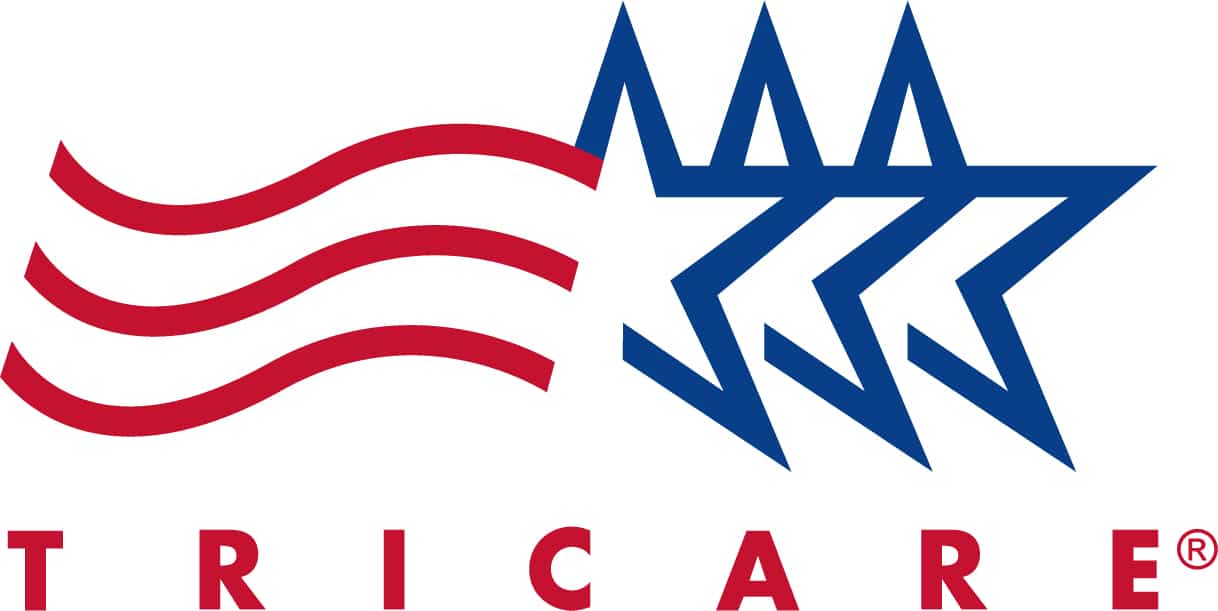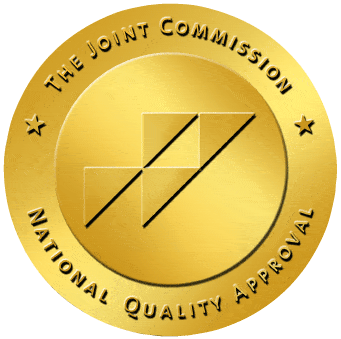What is Cognitive-Behavioral Therapy?
Why and How CBT is the most popular therapy in addiction treatment.

What is Cognitive-Behavioral Therapy?
Why and How CBT is the most popular therapy in addiction treatment.
Cognitive-behavioral therapy, or CBT, is the most commonly used therapy in addiction treatment programs. Based on the theory that learning processes are at the heart of developing maladaptive thought and behavior patterns, cognitive-behavioral therapy seeks to help people identify dysfunctional patterns of thinking and behaving and develop healthier ones. This occurs as individuals develop a variety of skills and strategies that help them evaluate and change the way they think and behave in real time.
Cognitive-behavioral therapy typically involves anywhere from 16 to 40 sessions and is effective for treating substance use disorders and mental illnesses like anxiety, depression, PTSD and eating disorders. It’s action-oriented, goal-based and widely used to help people resolve relationship problems, manage emotions and cope with things like stress, illness, grief, negative emotions and even chronic pain or fatigue.
Here, we take a closer look at cognitive-behavioral therapy, including how it works, the different types of CBT, and what the research says about it.
A Brief History of Cognitive-Behavioral Therapy
Cognitive-behavioral therapy was developed by Dr. Aaron Beck, a psychiatrist at the University of Pennsylvania. Drawing on the work of early 20th century theorists and therapists, including Alfred Adler, Albert Ellis, and Ivan Pavlov, Dr. Beck identified the strong link between the internal dialogues of his clients and their emotions and behaviors. He saw that our unique thought and behavior patterns shape our view of our experiences, both good and bad. Altering negative patterns, Dr. Beck found, changes our experience and helps us face difficulties and reach goals with confidence.
Since its inception in the 1960s, cognitive-behavioral therapy has expanded into a range of therapies used for specific purposes, such as to reduce the impact of trauma, end irrational fears or reduce intrusive thoughts. All types of cognitive-behavioral therapy are based on examining the relationship between thought patterns and behavior.
More About Therapies
Learn More About Recovery
Stinkin' Thinkin': CBT and Cognitive Distortions
At the heart of any addiction are self-destructive ways of thinking, and these lead to dysfunctional behaviors. Unconscious, negative thought patterns can contribute to the development of an addiction, and they can worsen the addiction and make it very hard to quit using drugs or alcohol without help. Addiction itself changes your thought patterns and can bring about unhealthy ways of looking at the world and coping with it.
The negative thought patterns associated with addiction and mental illness are called cognitive distortions. Many therapists call them “stinkin’ thinkin’.” Identifying these common patterns of stinkin’ thinkin’ is the first step to changing them.
All-or-Nothing Thinking
When you think in black and white and can’t see shades of gray, it’s all-or-nothing thinking. For example, you believe that if you don’t do something perfectly, or if a relationship isn’t perfect, then it’s a complete failure.
Overgeneralization
Overgeneralizing occurs when you use a single incident to make a broad conclusion. For example, if one job interview goes wrong, you decide you’re terrible at interviewing and tell yourself you’ll never get a job.
Jumping to Conclusions
When you jump to conclusions, you make a judgment about something without any evidence to back it up. For example, if you meet someone who doesn’t seem very friendly, you jump to the conclusion that they hate you. Or you may decide ahead of time that you won’t win a contest, so you don’t enter.
Personalization
When you personalize, you convince yourself that you’re at least partly responsible for the bad things that happen around you, even if you have nothing to do with it. You believe that everything you do impacts external events or other people.
Always Being Right
It’s nice to be right, but this cognitive distortion makes us believe that we must always be right, even if it means hurting someone’s feelings or not admitting to a mistake. It’s hard to be fair and objective when you believe that being wrong is unacceptable.
Filtering
Filtering refers to the way you may ignore all of the positive things around an experience and focus solely on the negative. For example, you may give a great speech, but you beat yourself up afterwards for a small mistake that probably went unnoticed.
Catastrophizing
When you expect the worst possible thing to happen based on no or flimsy evidence, you’re catastrophizing. For example, you make a minor mistake at work but convince yourself that you’ve ruined the project and you will be fired, when the reality is that it’s not a catastrophe, and it can be fixed.
These and other cognitive distortions lead to relationship problems, and they foster negative emotions and result in unhealthy behaviors. Once you are able to identify your own cognitive distortions, you can work on replacing them with more realistic, accurate ways of thinking. For example, when your job interview goes bad, you’ll realize that not every interview is going to be perfect, and you’ll look forward to trying again and hope for better results.
Four Phases of Cognitive-Behavioral Therapy: What to Expect
Cognitive-behavioral therapy takes clients through four stages of treatment. Since CBT isn’t rigid and fixed, the stages often overlap.
The Assessment Stage
During the first stage of therapy, the assessment stage, you and your therapist get to know each other and form an alliance. It’s extremely important that you and your therapist get along, and you should feel like your therapist is on your side. A healthy, positive therapist-client relationship is the foundation of CBT, since this type of therapy is highly collaborative.
The assessment stage typically lasts for one or two sessions, during which the therapist asks questions about your condition and learns a little about your history and what you hope to gain from therapy. Your therapist will use this information to formulate a treatment plan and get an idea of how many sessions you’ll need. The treatment plan is not fixed. It grows and changes with you.
The Cognitive Stage
During the cognitive stage of therapy, you begin to better understand your thoughts and how to control them. Although cognitive-behavioral therapy doesn’t focus on the past, your therapist may want to examine some of the past events in your life to better understand your present thought processes.
Together, you and your therapist will evaluate your thought patterns and beliefs and put them through “reality testing,” which helps you evaluate whether your thoughts and beliefs are based in reality or whether they’re unreasonable. To do this, you’ll look at the evidence and consider how you came to think or believe in a certain way.
The Behavioral Stage
During the behavioral stage, you learn how your thoughts and emotions influence your behaviors and vice versa. You’ll examine maladaptive behaviors and the beliefs and thought processes behind them. You’ll learn practical skills and techniques for coping with negative emotions that contribute to dysfunctional behaviors, and you’ll take actionable steps to promote behavioral changes. Changes in behavior occur gradually, as you learn to evaluate your thoughts and think in healthier ways.
The Independence Stage
Techniques and Tools Used in Cognitive-Behavioral Therapy
Because cognitive-behavioral therapy is action-based and goal-oriented, therapists have an enormous arsenal of tools, strategies and techniques they use to help you create real and meaningful change in your life through healthier thinking. These include:
Journaling, which helps you become more aware of your thoughts and emotions and your behavioral reactions to them.
Interoceptive exposure, which involves being exposed to sensations you fear so that you can recognize that they aren’t dangerous.
Playing the script to the end, during which you finish a worst-case scenario in your mind to see that everything will turn out okay in the end.
Progressive muscle relaxation, which puts your whole body into a state of relaxation and helps to reduce stress and anxiety on the spot.
Worksheets, which help you untangle your thoughts and emotions, define problems, develop coping strategies and recognize the consequences of particular thoughts and behaviors.
Situation exposure hierarchies, which help you decide what issues to address first. This involves making a list of the things you avoid and giving them a rating based on how distressed they make you feel.
Mindfulness practices, such as meditation, to help reduce automatic negative thoughts and help you stay grounded in the present.
Successive approximation, which is simply the process of breaking up large tasks into smaller, more manageable steps that are easier to accomplish.
Self-statements, which involve writing down positive statements about yourself to counteract negative thoughts.
Visualization, which helps you prepare for a daunting situation ahead of time. It’s also used to recount and re-live all of the positive aspects of your day.
Expressing gratitude, which makes it easier to see the positive side of life and reduces the intensity of stress, anxiety and depression.
Reframing, which involves immediately countering a negative thought about a particular situation with a deluge of positive thoughts about it.
Types of Cognitive-Behavioral Therapy Used in Addiction Treatment
Cognitive-behavioral principles have found their way into a variety of therapies that draw on the theory that thoughts and emotions affect behaviors, and altering faulty thought patterns leads to healthier behavior patterns. While each type of CBT offers a unique therapeutic approach, they all center on underlying thought patterns that cause emotional distress and lead to dysfunctional behaviors. The appropriate type of therapy for you depends on your unique needs, issues and goals.
Here are some of the types of cognitive-behavioral therapy commonly used in addiction treatment settings.

Rational Emotive Behavior Therapy
Rational emotive behavior therapy (REBT) is the original form of cognitive-behavioral therapy, developed in 1955 by Dr. Albert Ellis. REBT identifies six key irrational beliefs and provides a framework for evaluating them. Through the framework, you identify your thoughts and beliefs about a situation, examine the consequences of the thoughts and beliefs, debate the negative beliefs, choose true and effective beliefs, and reap functional emotions and behaviors as a result.

Dialectical Behavior Therapy
Dialectical behavior therapy (DBT) was originally developed in the 1980s to treat borderline personality disorder, but it’s been found effective for addressing trauma, substance abuse and depression, among other conditions. It focuses on helping clients develop skills in four key areas: Mindfulness, distress tolerance, emotional regulation and effectiveness in relationships. DBT typically involves individual therapy sessions along with skills groups, which provide mutual support and are led by trained therapists who teach skills and lead exercises.

Exposure Therapy
Exposure therapy is typically used to treat PTSD, phobias, and obsessive-compulsive disorder. During exposure therapy, individuals identify triggers and learn techniques to reduce the power the trigger has to elicit dysfunctional behaviors. Then, the client confronts the trigger in a controlled environment, where they safely practice using the strategies they’ve learned to diffuse the trigger.

Acceptance and Commitment Therapy
Acceptance and commitment therapy (ACT) is a type of cognitive-behavioral therapy that focuses on helping individuals accept their negative thoughts and emotions. It’s typically used to treat anxiety and trauma and emphasizes body awareness and mindfulness as clients work to accept, rather than eradicate, certain thoughts and behaviors. ACT focuses on helping people develop flexibility rather than engaging in strict, rigid ways of coping.

Mindfulness-Based Cognitive Therapy
Mindfulness-based cognitive therapy (MBCT) focuses on changing the way you react to thoughts. It’s typically used to treat stress, anxiety and chronic pain. During MBCT, the focus in on helping you create distance from negative thoughts and learn to think without judging yourself. It’s designed to end the spiral of negative thinking that worsens anxiety, depression and stress.
How Effective is Cognitive-Behavioral Therapy?
A large body of research shows that cognitive-behavioral therapy results in positive effects that last long after therapy has ended. One study, published in the journal Psychiatric Clinics of North America, found that 60 percent of cocaine-addicted clients who participated in cognitive-behavioral therapy provided clean urine samples a year later.1
Another study of people in recovery from cocaine addiction found that by the 15th one-hour session of cognitive-behavioral therapy focusing on cue extinction, or reducing craving responses to environmental triggers, all participants reported that they no longer experienced cravings when presented with environmental cues.2
According to the National Institute on Drug Abuse, combining cognitive-behavioral therapy with medications that treat addiction provides even more powerful effects than CBT alone.3 This combination is known as medication-assisted treatment, and it’s the gold standard for treating opioid addiction.
In the early phases of cognitive-behavioral therapy, clients may feel that simply becoming aware of their dysfunctional thoughts, beliefs and behaviors isn’t enough to change them. But as therapy progresses, they develop essential skills and use actionable strategies that bring about change. This takes time, and it’s important to be patient and avoid becoming discouraged.
How to Get the Most Out Of Cognitive-Behavioral Therapy
How well cognitive-behavioral therapy works depends, in part, on how engaged you are with therapy. Cognitive-behavioral therapy is a process, and it takes time to see the changes. Staying encouraged, putting in the work at every session and staying mindful of what you’re learning between sessions help ensure that CBT will work for you. Here are some other things you can do to get the most out of cognitive-behavioral therapy:
Regard therapy as a partnership between you and your therapist. Together, you’ll map out the issues you want to work on and create a plan for meaningful change.
Be completely honest with your therapist about your thoughts, feelings, emotions and experiences. Your therapist will not judge. If you’re having trouble expressing certain emotions or experiences, tell your therapist, and he or she can help you through it.
Keep an open mind. You’ll encounter new ways of thinking about your thoughts, emotions, behaviors and attitudes, and the more mentally flexible you are, the better you’ll be able to recognize dysfunctional patterns and change them.
Therapists often give assignments, such as writing in a journal each day or doing mental exercises, and doing these activities helps you apply what you’re learning in therapy.
Remember that early on, therapy can be challenging as you identify problems and confront experiences that may be upsetting. But as you continue meeting with your therapist, you’ll find that it becomes easier to think and talk about issues without discomfort.
Treatment Works
Around 23.2 million Americans have a drug or alcohol addiction, but according to the National Institutes of Health, only around 10 percent of them seek treatment.4 Getting professional help for an addiction dramatically improves the chances of long-term recovery. Good intentions and willpower are rarely enough to end an addiction for good, but cognitive-behavioral therapy and other therapies used in high quality treatment programs help you develop the skills, strategies, tools and techniques you need to enjoy a sober lifestyle and find internal peace and authentic happiness in your life.
Treatment works for most people who fully participate in their recovery. If you have a drug or alcohol addiction and are ready to end it once and for all and improve your life on all fronts, treatment can help.














